A Dozen Rosés: The French Climate Divide: Northern (Oceanic) vs. Southern (Mediterranean) in Six Types by Six Producers (12-Bottle Pack $246, Tax Included)
With apologies to Mr. Shakespeare, a rosé by any other name would probably be sweeter. The fortunes of pink wine have risen and fallen with consumer tastes, especially in the United States, where rosé has endured a shunning for being a backyard party drink to its recent status as a social media star. But in Europe, rosé has been a mainstay for centuries, and in France—which pumps out millions of gallons each year—there was pink before there was red, since the Greeks did not macerate their grapes and that is the technique by which darker wines obtain their color.
In Provence, where 91% of all wine produced is pink, rosé is (unofficially) classified by shade, lightest to darkest: Peach, Melon, Mango, Pomelo, Mandarin and Redcurrant. These gradations can apply to any blush from any appellation; they are based on the vigneron’s production methods and the grape variety used. But they are also a verbal ode to the lovely fruitiness prized even in the driest rosé, whether made in France’s cooler, damper North, or the warm and windy South.
This package, with dozen bottles ($246, all inclusive), contains selections from six of France’s most highly regarded rosé-producing regions. It represents the spectrum of hues and flavors that mark the climatic influence, as well as the common essence of the dry French ‘rosé style’ that makes it the quasi-official wine of summer. We can deliver the package to you for free within a reasonable distance. 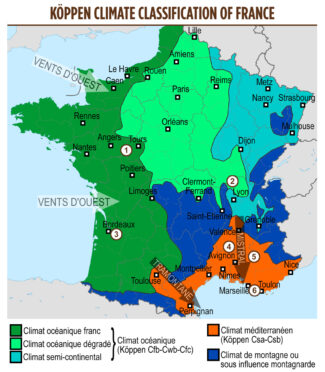
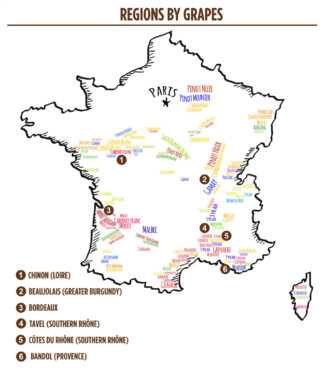
Oceanic Climate
The Temperate & Cold North-Northwest
1- Chinon (Loire)
The confluence of the Loire and Vienne rivers is a demarcation where the influence of the Atlantic sweeps through the two valleys. Vineyards are generally oriented on east to west slopes with sunny southern exposures, creating a microclimate ideal for Cabernet Franc. As a result, the medieval town of Chinon—and the appellation that takes its name—is known for rich reds and vibrant pink wines made from that variety. Beyond the climate, Chinon boasts unique soil; tuffeau jaune is a fragile sedimentary rock made of sand and highly porous marine fossils, meaning that it absorbs water rapidly and disseminates it slowly, ideal for grape cultivation.
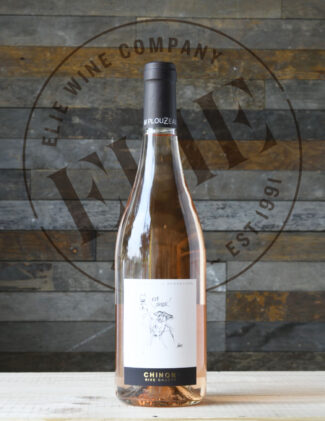 Château de la Bonnelière
Château de la Bonnelière
Respect for tradition and love of family are the twin forces that animate Château de la Bonnelière: In 1976, Pierre Plouzeau bought the old family castle and renovated the property while replanting the largely-vanished vineyards. His son Marc took over in 1999 and has become one of Chinon’s most prolific and talented personalities, responsible for a plethora of marvelous juice—red, white and pink. 43 acres of vines and a 1500-square-meter cellar carved out of the castle’s solid stone foundation provide an environment as beautiful as it is fecund. Château de la Bonnelière ‘M Plouzeau – Rive Gauche’, 2020 Chinon Rosé ($17) is a sensationally complex rosé from Cabernet Franc showing notes of limestone, tart cranberry, red currants, raspberry, pomegranate and pink grapefruit.
2- Beaujolais (Greater Burgundy)
Interest in Beaujolais rosé has skyrocketed of late; so much so that the output has increased by 34% in the past four years alone and now approaches two million bottles annually. Rosé is produced exclusively in the Beaujolais and Beaujolais Villages AOPs, with 450 of the region’s 3000 estates offering the style. Like its red wines, Beaujolais rosé is made entirely from Gamay—the difference is that bunches destined to be blush are often macerated only for a few hours before pressing, and the choice of conducting malolactic fermentation is left to the vintner based on the style and profile he is after in any given vintage.
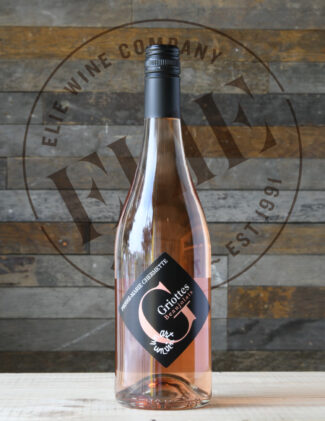 Chermette Vissoux
Chermette Vissoux
The irony of Beaujolais is that it tends to be a wine best consumed in its youth, while the soils to produce it have required 320 million years to evolve. The Vissoux family falls in between that timeline, having established itself in the village of Saint-Vérand in the 17th century. Today, from 15 acres of vines, Pierre-Marie, Martine and Jean-Etienne craft white, rosé and red Beaujolais from crus such as Brouilly, Fleurie, Moulin-à-Vent, Saint-Amour, as well as Crémant de Bourgogne and hand-crafted fruit liqueurs. Chermette Vissoux ‘Griottes’, 2020 Beaujolais Rosé ($18)owes its elegance to soils that are Saint-Vérand specific, consisting of plagio-granite similar to the blue stones of the Côte de Py in Morgon and may be found as far away as Norway. The wine itself is peach-pink, offering the bouquet of fresh spring flowers with sweet Muscat note with spicy star anise on the finish.
3- Bordeaux
Wine is art and wine is poetry, but wine is also marketing, and the relative scarcity of rosé from Bordeaux—France’s hub for massive and structured red wines—is economics. Dark, big-shouldered Cabernets and Merlots command higher prices and have been relatively easy sales, and for the most part, historically lightweight ‘clairet’ wines were bled from vines still too young to make the powerhouse wines expected of a château. Over the past twenty years, however, in keeping with consumer trends, many Bordeaux producers have rethought their approach to rosé, and have begun to produce a style lighter and fruitier than clairet with an eye to attracting a younger market.
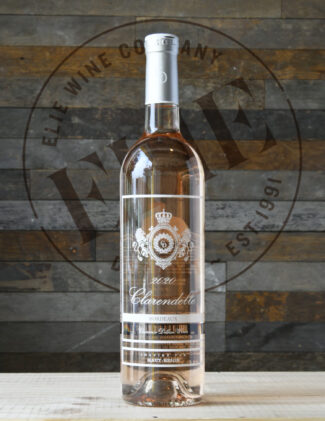 Clarendelle
Clarendelle
‘Act fast’ are odd words to sum up the history of Haut-Brion, where vignerons have patiently worked vineyards for centuries, and whose wines often take decades to mature. But those succinct two words were uttered by American banker Clarence Dillon in 1935 when told via telegram that the Premier Grand Cru Classé estate of Haut-Brion could be purchased, but only if his accountants acted fast. They did. Clarendelle, 2020 Bordeaux Rosé ($21) (whose label reads ‘Inspiré par Haut-Brion’) takes it cues from the clairet-style of Bordeaux’s bygone era, and a blend of Merlot, Cabernet Sauvignon, and Cabernet Franc juice briefly macerated, then drawn off to preserve the freshness of newly picked grapes. The wine has the delicate hue of rose petals and presents hints of tangy redcurrants and raspberries alongside rounder notes of ripe grapefruit and lychee in a mineral-driven package.
Mediterranean Climate
The Warm & Windy South
4- Tavel (Southern Rhône)
To say ‘Tavel rosé’ is to repeat yourself since, by law, all wine from Tavel is rosé. Creeping along the right bank of the Rhône River in the Gard, the soils of Tavel are a potpourri of small stones called galets roulés, fine sand and fractured limestone, and the hot, dry climate allows the grapes (predominantly Grenache, Syrah and Clairette) to achieve full phenolic ripeness. As a result, Tavel rosé tends to be richer and more deeply colored than the salmon-pink wines from other regions, with an associated complexity of flavor in the glass.
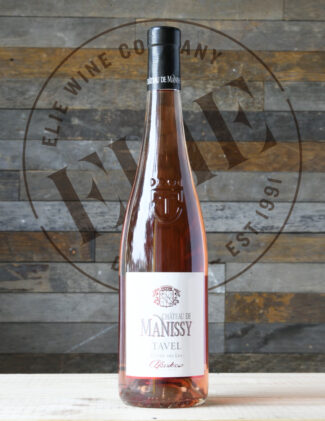 Château de Manissy
Château de Manissy
The estate (which has belonged to the Congregation of Missionary Fathers of the Holy Family since the 18th century) operates under the motto, ‘Auspice clara Manissy Stella’, or, ‘beneath the protection of the bright star of Manissy.’ Since 2004, it has also operated under the auspices of Florian André, whose winemaking and cellar skills have upheld the Château’s reputation for Tête de Cuvée barrel-aged rosé. Château de Manissy, 2020 Tavel Rosé ($18) is 60% Grenache, 30% Clairette, 10% Syrah from vines that average 45 years old grown in clay, river rock and fine-grained sand. It opens with aromas of white flowers and spring strawberries, filling out in a silky blend of watermelon and pomegranate; it is rich in minerality and intriguingly peppery on the finish.
5- Côtes du Rhône (Southern Rhône)
Among the best value rosés in a category already saturated with bargains are the blush wines of the Côtes du Rhône. The offerings cover the spectrum of colors delineated in the Provençal color chart, pale pink to rich raspberry, with a palate that tends toward the full-bodied and exceptionally fruity. Novices have been known to ask if rosé is simply a blend of red and white grapes, and in the case of Côtes du Rhône rosé, up to 20% of the cuvée may be composed of white varieties. For the red grapes, Grenache is the ringleader, with Cinsault, Mourvèdre and Syrah used as supplements and each adding their unique spin to the final profile. For whites, Grenache blanc, Clairette and to a lesser extent, Marsanne may show up.
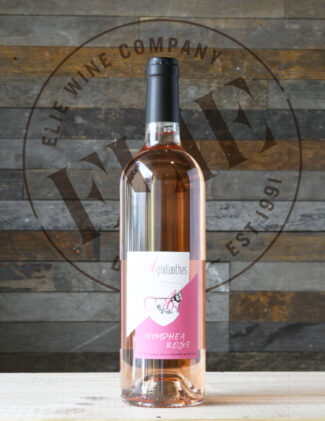 Domaine Les Aphillanthes
Domaine Les Aphillanthes
Daniel and Hélène Boulle first took over Domaine Les Aphillanthes in 1987, although Daniel was the fourth generation of his family to work this land; at the time of the purchase, the estate covered about 25 acres. Since then, the Boulles have tripled the size of their vineyards (located near Gigondas), gone organic, and are so committed to quality that they hold yields well below the local allowance and will not produce in vintages that do not live up to their expectations. Domaine Les Aphillanthes ‘Nymphea’, 2020 Côtes du Rhône Rosé ($15) is grown on clay and limestone soil, and bottled without fining. The cuvée is primarily Grenache and Cinsault shored up by smaller quantities of Mourvèdre and Counoise; it is fleshy and dry, showing red currant, orange zest and a nice spicy lift.
6- Bandol (Provence)
One of the key appellations in Provence, Bandol received official AOC status in 1941, but has been recognized as a source of rosé wine for far longer: Dumas’ immortal Count of Monte Cristo sipped a glass of Bandol pink ‘bien frais’—well-chilled. The region encompasses almost 4000 acres, a third of which is dedicated to rosé made from a blend (like the reds) dominated by Mourvèdre, Grenache and Cinsault. Located on a stretch of Mediterranean coastline, the vines enjoy warm (often hot) growing conditions moderated by cool wind from the sea and protected from cold northerly winds by the Montagne Sainte-Victoire and the Massif de la Sainte-Baume ranges.
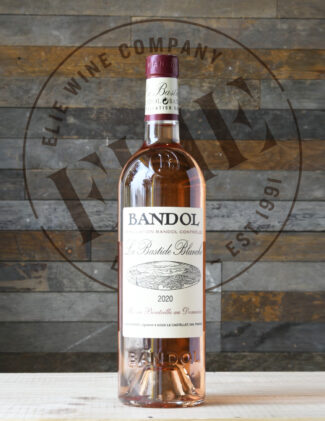 Domaine La Bastide Blanche
Domaine La Bastide Blanche
When, in 1970, Michel and Louis Bronzo purchased La Bastide Blanche, they had a lofty goal: To produce a Bandol wine that would rival Châteauneuf-du-Pape. Their patience paid off in 1993 when a banner vintage put both their domain and Bandol on the world’s wine map. The estate is noted for the high percentage of Mourvèdre used in cuvées—up to 75% for their reds and rosés—while yields of all varieties are kept very low. Domaine La Bastide Blanche, 2020 Bandol Rosé ($27) is delightful summer gem that includes some Grenache and Cinsault behind the Mourvèdre, and is unbeatable as an accompaniment to the local Provençal cuisine. It presents cinnamon, mulled spice, redcurrants and cassis; the acidity is well integrated against the fruit tannins, with a steely mineral edge on the finish.
- - -
Posted on 2021.08.20 in Chinon, France, Bordeaux, Beaujolais, Wine-Aid Packages, Loire, Provence, Southern Rhone
Featured Wines
- Notebook: A’Boudt Town
- Saturday Sips Wines
- Saturday Sips Review Club
- The Champagne Society
- Wine-Aid Packages
Wine Regions
Grape Varieties
Aglianico, Albarino, Albarín Blanco, Albarín Tinto, Albillo, Aleatico, Arbanne, Aubun, Barbarossa, barbera, Beaune, Biancu Gentile, bourboulenc, Cabernet Franc, Cabernet Sauvignon, Caino, Caladoc, Calvi, Carcajolu-Neru, Carignan, Chablis, Chardonnay, Chasselas, Clairette, Corvina, Cot, Counoise, Erbamat, Ferrol, Fiano, Frappato, Friulano, Fromenteau, Fumin, Garnacha, Gewurztraminer, Godello, Graciano, Grenache, Grolleau, Groppello, Juan Garcia, Lambrusco, Loureira, Macabeo, Macabou, Malvasia, Malvasia Nera, Marsanne, Marselan, Marzemino, Melon de Bourgogne, Merlot, Mondeuse, Montanaccia, Montepulciano, Morescola, Morescono, Moscatell, Muscadelle, Muscat, Natural, Nero d'Avola, Parellada, Patrimonio, Petit Meslier, Petit Verdot, Pineau d'Aunis, Pinot Auxerrois, Pinot Blanc, Pinot Gris, Pinot Meunier, Pinot Noir, Poulsard, Prieto Picudo, Rondinella, Rousanne, Roussanne, Sangiovese, Sauvignon Blanc, Savignin, Semillon, Souson, Sparkling, Sumoll, Sylvaner, Syrah, Tannat, Tempranillo, Trebbiano, Trebbiano Valtenesi, Treixadura, Trousseau, Ugni Blanc, vaccarèse, Verdicchio, Vermentino, Viognier, Viura, Xarel-loWines & Events by Date
- April 2024
- March 2024
- February 2024
- January 2024
- December 2023
- November 2023
- October 2023
- September 2023
- August 2023
- July 2023
- June 2023
- May 2023
- April 2023
- March 2023
- February 2023
- January 2023
- December 2022
- November 2022
- October 2022
- September 2022
- August 2022
- July 2022
- June 2022
- May 2022
- April 2022
- March 2022
- February 2022
- January 2022
- December 2021
- November 2021
- October 2021
- September 2021
- August 2021
- July 2021
- June 2021
- May 2021
- April 2021
- March 2021
- February 2021
- January 2021
- December 2020
- November 2020
- October 2020
- September 2020
- August 2020
- July 2020
- June 2020
- May 2020
- April 2020
- March 2020
- February 2020
- January 2020
- December 2019
- November 2019
- October 2019
- September 2019
- August 2019
- July 2019
- June 2019
- May 2019
- April 2019
- March 2019
- February 2019
- January 2019
- December 2018
- November 2018
- October 2018
- September 2018
- August 2018
- July 2018
- June 2018
- May 2018
- April 2018
- March 2018
- February 2018
- January 2018
- December 2017
- November 2017
- October 2017
- September 2017
- August 2017
- July 2017
- June 2017
- May 2017
- April 2017
- March 2017
- February 2017
- January 2017
- December 2016
- November 2016
- October 2016
- September 2016
- August 2016
- July 2016
- June 2016
- May 2016
- April 2016
- March 2016
- February 2016
- January 2016
- December 2015
- November 2015
- October 2015
- September 2015
- August 2015
- July 2015
- June 2015
- May 2015
- April 2015
- March 2015
- February 2015
- January 2015
- December 2014
- November 2014
- October 2014
- September 2014
- August 2014
- July 2014
- June 2014
- April 2014
- March 2014
- February 2014
- January 2014
- December 2013
- November 2013
- October 2013
- September 2013
- August 2013
- July 2013
- June 2013
- May 2013
- April 2013
- March 2013
- February 2013
- January 2013
- December 2012
- November 2012
- October 2012
- February 2004
Search



